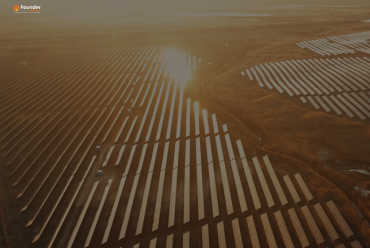
General Fusion is pursuing a fast and practical approach to commercial fusion energy and is headquartered in Richmond, B.C., Canada. (Image: screenshot from General Fusion’s webpage)
SRNL and UKAEA, labs renowned for neutronics simulation, tritium innovation, and fuel cycle R&D, recently reviewed key parameters of the company’s unique approach to practical fusion energy
RICHMOND, British Columbia, Sept. 19, 2024 (Korea Bizwire) – New analyses from the U.S. Savannah River National Laboratory (SRNL) and UK Atomic Energy Authority (UKAEA) support General Fusion’s Magnetized Target Fusion (MTF) design approach to shielding the fusion machine’s vessel from neutron damage and producing enough tritium to sustain power plant operations for the life of the machine. These characteristics of General Fusion’s unique approach are designed to address two key barriers to commercializing fusion power: sustainable fuel use and production and the ‘first wall problem.’
“This is why I chose to pursue Magnetized Target Fusion with a liquid metal wall when I founded General Fusion. The SRNL and UKAEA analyses confirm that our approach inherently solves key challenges in fusion power plant design,” said Dr. Michel Laberge, Founder and Chief Science Officer, General Fusion. “The liquid metal provides a unique and simple solution to the ‘first wall problem’ and fuel sustainability. We are tackling those barriers now to deliver what matters most: a practical power plant that is cost competitive.”
UKAEA modelling and SRNL study support General Fusion’s approach to fusion fuel sustainability
UKAEA modelling indicates that General Fusion’s power plant will generate sufficient tritium to fuel the plant for the life of its operations. Tritium is a key component of fuel used in most fusion technologies but is a scarce resource. Therefore, commercial fusion power plants must produce enough tritium to ensure a self-sustaining fuel source. The key metric to describe a fusion power plant’s ability to produce tritium is its Tritium Breeding Ratio (TBR). General Fusion’s unique liquid metal wall contains lithium, which is transformed into tritium and helium by fusion neutrons. To assess General Fusion’s TBR, the UKAEA conducted modelling with simplified spherical parameters representative of the company’s commercial MTF concept and calculated advantageous tritium breeding ratios greater than 1.5. For comparison, a power plant requires a minimum TBR of 1.1 to ensure it will breed sufficient fuel for the life of its operations.1
The SRNL study, completed as part of the U.S. Department of Energy’s INFUSE program, builds upon the UKAEA’s analysis and further confirms the tritium supply advantages of General Fusion’s power plant design. The study considered how much tritium would be needed to start up a General Fusion machine, the total amount of tritium required to operate the machine, and the amount of time it would take to breed enough tritium to fuel a second power plant, known as doubling time. SRNL’s study found that the design requires less tritium for start-up, has a significantly lower doubling time, and has a higher tritium breeding ratio than what is publicly available for traditional tokamak fusion approaches. This analysis supports General Fusion’s approach to designing a practical solution to ensure commercial fusion technology can operate sustainably into the future.
UKAEA modelling supports General Fusion’s approach to addressing the ‘first wall problem’
The UKAEA’s modelling also supports General Fusion’s plasma compression approach using a liquid metal wall—the game-changer in General Fusion’s power plant design—to shield the vessel from neutron activation. This shielding will address the critical ‘first wall problem’ – the damage fusion machine vessels incur when bombarded with neutrons produced by fusion. With its liquid metal wall, General Fusion’s commercial machine will operate without frequent major equipment replacements, driving significant advantages in efficiency, capacity factor, and capital and operational cost.
“While we’re on track to achieve transformative technical milestones with LM26 over the next 24 months, we’re simultaneously making steady progress in hardening our commercial power plant design, so we are prepared for the next phase,” said Greg Twinney, CEO, General Fusion. “Validating our technology with top-tier external experts, including the UKAEA and SRNL, is crucial for building confidence in our approach. These results reinforce our mission—not just to achieve fusion, but to make fusion power a commercial reality.”
Quick Facts:
- General Fusion will be creating fusion energy with deuterium and tritium.
- Fusion fuel is made up of hydrogen isotopes deuterium and tritium. Deuterium is naturally occurring and can be derived from seawater.
- In General Fusion’s MTF approach, the proprietary liquid metal liner in the fusion vessel is mechanically compressed by high-powered pistons. This allows General Fusion to create fusion conditions in short pulses, rather than creating a sustained reaction, while protecting the machine’s vessel, extracting heat, and re-breeding fuel.
- The technology is designed to scale for cost-efficient power plants. It does not require large superconducting magnets or an expensive array of lasers.
- The company is accelerating its progress by building a fusion demonstration called Lawson Machine 26 (LM26) to achieve technical breakthroughs that will de-risk and fast-track the path to a power plant. LM26 is designed to achieve fusion conditions of over 100 million degrees Celsius by 2025 and scientific breakeven equivalent by 2026.
- LM26 shortens the technical jump between General Fusion’s planned commercial-scale machine and a commercial pilot plant. As a result, the company is fast-tracking its path to provide commercial fusion energy to the grid by the early to mid-2030s.
About General Fusion
General Fusion is pursuing a fast and practical approach to commercial fusion energy and is headquartered in Richmond, Canada. The company was established in 2002 and is funded by a global syndicate of leading energy venture capital firms, industry leaders, and technology pioneers. Learn more at www.generalfusion.com.
General Fusion Media Relations
media@generalfusion.com
+1-866-904-0995
Follow General Fusion
twitter.com/generalfusion
instagram.com/generalfusion
linkedin.com/company/general-fusion
facebook.com/generalfusion
1Zheng, Shanliang, and Thomas N. Todd. “Study of impacts on tritium breeding ratio of a fusion DEMO reactor.” Fusion Engineering and Design 98 (2015): 1915-1918. https://doi.org/10.1016/j.fusengdes.2015.06.171
Source: General Fusion via GLOBE NEWSWIRE








Pingback: New third-party analyses support General Fusion’s MTF technology path to commercialization – Simple Sol.